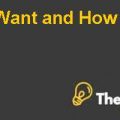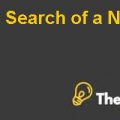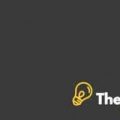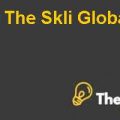
NEW MEDIA MARKETING
New media marketing is a concept that refers to the use of novel ways to present a particular brand. It incorporates social media networks such as FACEBOOK, TWITTER, INSTAGRAM, PINTEREST, GOOGLE + etc. which helps its users to socialize with each other, providing them a platform to do so. Today, social media marketing is something big, and if the marketers aren’t using these platforms to promote themselves then they are missing a huge chunk of target consumers. According to a study conducted, American citizens surf web using social media, Google and email, at an utmost level (Margot, 2014) . Further, 93% of the businesses seem to have an active presence on these social networking mediums, as this is an ingredient that helps a firm thrive through the soup (Margot, 2014). New Media marketing constitutes, website and web-content, search engines, online video and forums, social media networks, email news letter and subscriptions and content aggregators (Brafton, 2009). The focus of this paper is on attention economy, which follows the AIDA (Attention, Interest, Desire, and Action) plan in it is efforts to promote a particular brand through the social media networks.
The Attention Economy
Attention economy is a prospect which assumes that human attention span is a scarce resource, and that its utilization needs to be done in a timely and in an effective manner. According to (DavenPort & Beck, 2001), attention is described as something that requires focused metal attention on particular information, after which assessment is made whether or not to act on that piece of information or not. As attention is considered a scarce resource; hence, its optimal use is when Economics is incorporated into it. As the web is an unlimited resource and the attention span is a limited one, businesses need to gauge this limited attention towards their marketing efforts and they do it to their best by better mediation and management of information flow in order to capture the span in their very circumference (Elisa, 2014).
1. The concept
The concept behind attention economy is to filter out relevant information out of the redundant information which puzzles the consumer, a term known as information overload. Many software design focuses on injecting a load of information into their portals by focusing on reducing information scarcity rather than improving on increasing attention span. We are the generation that is working with several frames of minds, doing multi-tasking, to what David Foster Wallace labeled as “Total Noise” (Tom, 2013). The attention is a product for the implicit audience, which gauges user engagement into the interface; each click produces several statistics, which are then sold out to the prospective customers of these audiences. This audience is imaginary (anonymous) and therefore it is hard to avoid. This is even harder, which can be called an internalized social world (Adrian, 2009). Now, with a click you ponder on into the world that is socially internalized, and this world is witnessed by every web surfer unconsciously. Further, what happens is, with a single click, you don’t go into the desired direction, it often happens, that once you click a website, you see some eye-catching web banners, some interesting punch lines, some over the board discounts and they lead you in their very direction. They then capture your interests and attention span with the movement of your cursor (Margot, 2014).
Further, this data helps big companies estimate their potential in the industry, by estimating the impacts of their advertisement and marketing expenditure. The result is a treasure to the marketers as it helps them to gauge effectiveness of their marketing campaigns. Earlier this wasn’t possible, therefore, such portals and software have been developed which give in-depth information on every individual’s demographics including age, gender, marital status, number of times viewed, the most visited page, the time spent on the each of the web pages etc. This helps companies to gain control on their marketing expenditure and invest in campaigns that are the demand of time by looking at the economical trends (Margot, 2014).
2. Why it is important?
Attention economics major benefit is in its ability to gauge AIDA, that is did the marketing efforts create attention, did it create an interest to visit through the content more, did the advertisement produce a desire in the mind of the consumer viewing the advertisement and if all the three stages are crossed then to what extent these efforts paid-off in terms of ROI (Return on Investment). Businesses are now becoming increasingly dependent on the data accumulated through the web portals. Talking about, FACEBOOK Insights, one of the best quantitative data provider to the businesses, that tracks social media platforms and produces analytics features and allow companies to monitor as well as track activity on their social media pages and content. About 75 percent of businesses are using social marketing in some capacity, but the demand is now increasing at a continuous pace for better tools to measure success of their campaigns.
Marketing aims at selling and therefore the new media platforms help ...........................
This is just a sample partial case solution. Please place the order on the website to order your own originally done case solution.











